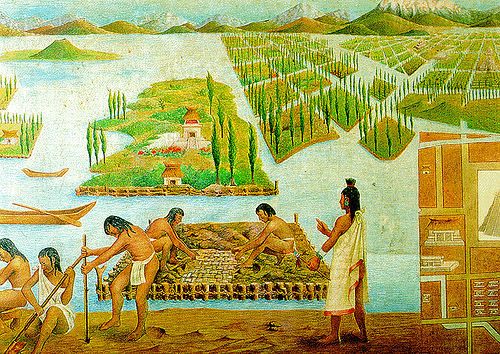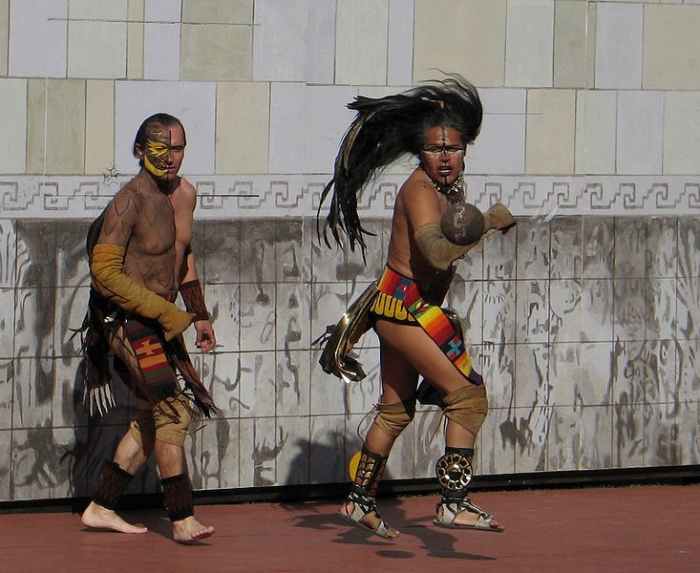

Importantly, in Tenochtitlan ideas about ‘disorderly women’ did not lead inevitably to their practical subordination or suppression women held practical markers of influence and esteem in Aztec culture. This article explores the ways in which beliefs about the female capacity for disruption both reflected and shaped reality, ensnaring all women in a cycle of myth and history which made femininity a source of both authority and apprehension. This chaotic energy lent cosmological and dynastic significance to the mytho-historical Women of Discord, but also led to a persistent female association with disorder which had tangible (and often overlooked) consequences for the lives of ‘real’ women in Aztec culture. The male warrior had the pride of place in the Aztec society. The importance of warfare to the Toltec can be seen in the remnants of their massive monuments. Eagle, a symbol of power was also included in the insignia of the Aztec capital Tenochtitlan. The Toltec were warriors and innovators of architecture and artistry. The Aztecs on the other hand were a very warlike people who waged war against their neighboring tribes forcing them to pay tribute. 'Quauhtli' (eagle) is the 15th of the 20 days of the Aztec calendar, a symbol expressing warlike qualities in those born under this sign, but the sign also means a tendency to plunder and steal. However, researchers said the children found had died from natural causes. Influential, but often troublesome, these formidable figures embody the complex significance of female power, rooted in women's privileged access to the awesome earth forces through childbirth. They had an obsession with time and tried to measure it by studying astronomy and correlating it with their current events. The Aztecs were a warlike and deeply religious civilization, which built monumental works and practiced human sacrifice. Williams said.This article addresses the perennial debate over the origins and nature of female power by examining the significance of ‘Women of Discord’ in Aztec (more properly, Mexica) culture. They were land records drawn up that helped determine taxation imposed on the local people by the Spaniards, Ms. And the said Tizoc was extremely valiant and warlike in battle, and before succeeding to the said lordship, he personally performed valiant deeds in the wars. The values of war were dramatized and re-enacted at every level of society, and their shared warrior identity was widely understood by both men and women. Six imperial rulers expanded the Mexica domain from 1430 until 1519, until the Spaniards first set foot in Tenochtitlan and disrupted the Aztec imperial agenda. The two manuscripts - one found in a library in France and the other in Mexico - were written on European paper by Aztecs a couple of decades after the conquest, using the Aztec system. The Aztec-Mexica people of Tenochtitlan were, by their own definition, a ´warlike´ culture, their collective identity closely tied to military ideals and behaviours. Their calvary was very effective, and they were know to show up in one instant, and be gone the next. But in almost all of the early societies, they could do everything they needed to do, with just those four. They got so good at war that they could defeat an enemy that outnumbered them. "They used the four mathematical operations of addition, subtraction, multiplication and division. Study with Quizlet and memorize flashcards containing terms like Aztec (Select.


Williams teamed with Maria del Carmen Jorge y Jorge of the Universidad Nacional Autonoma de Mexico in the study published in the journal Science. We've determined that it was more complex," researcher Barbara Williams of the University of Wisconsin-Rock County said in a telephone interview. "What we thought we knew about the Aztec measuring system was a little simplistic. god, the warlike and cruel Huitzilopochtli, they began a journey to the. An examination of these hieroglyphic records showed that the Aztecs used their own calculation system to figure out, for example, the area of a parcel of land. As the chosen people of the Sun God Huitzilopochtli, the Aztecs had the divine. Get the facts on the Aztecs, and use the links to explore this astounding civilization. By the time of Cortés arrival, the Aztecs had created a great empire. The Aztecs used a system that included symbols of hearts, hands, arrows, bones, arms as alternatives to using fractions. From the 13th to the 16th century, the warlike Aztec people inhabited the lands surrounding Tenochtitlán (present-day Mexico City) in the central Mexican basin.


 0 kommentar(er)
0 kommentar(er)
